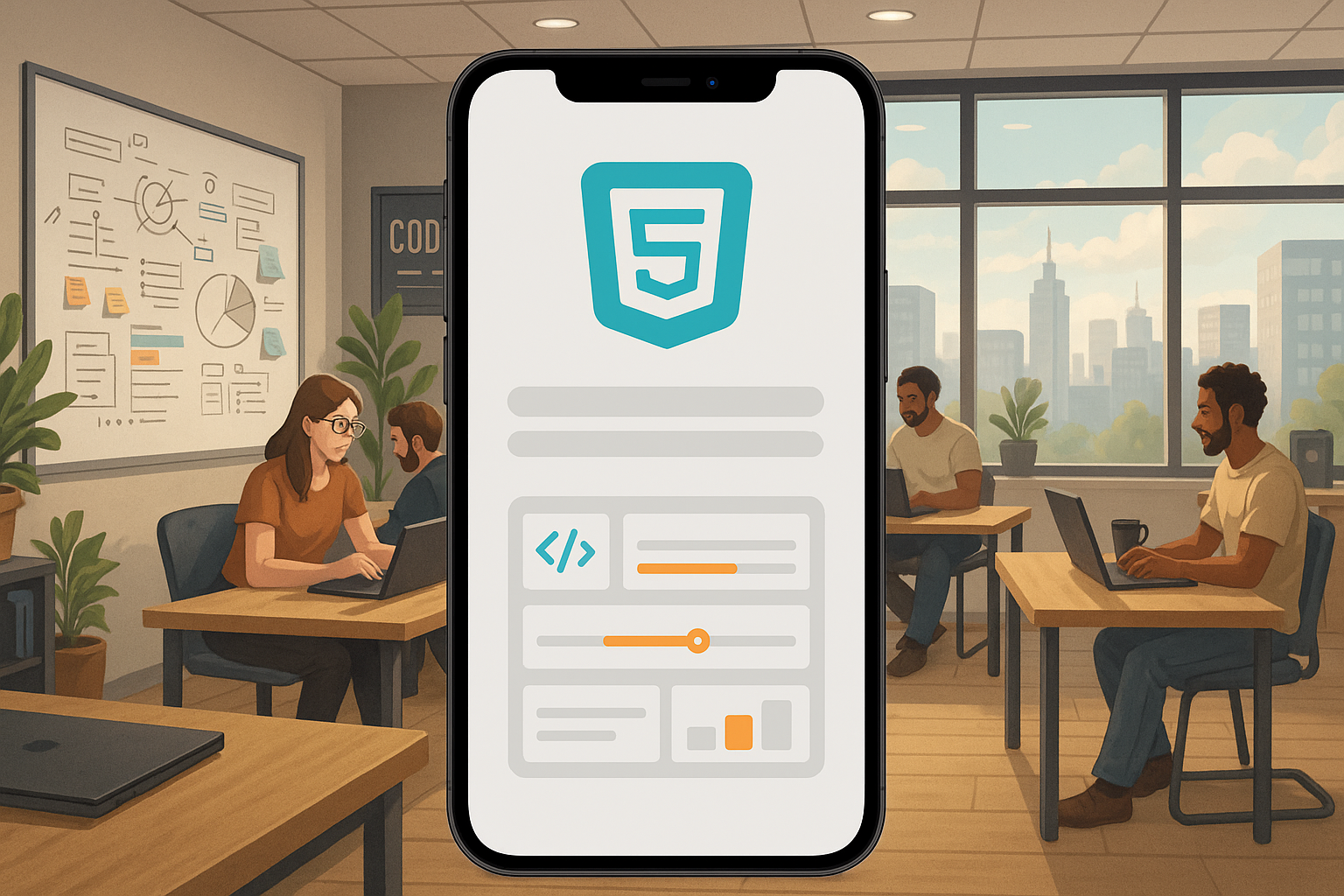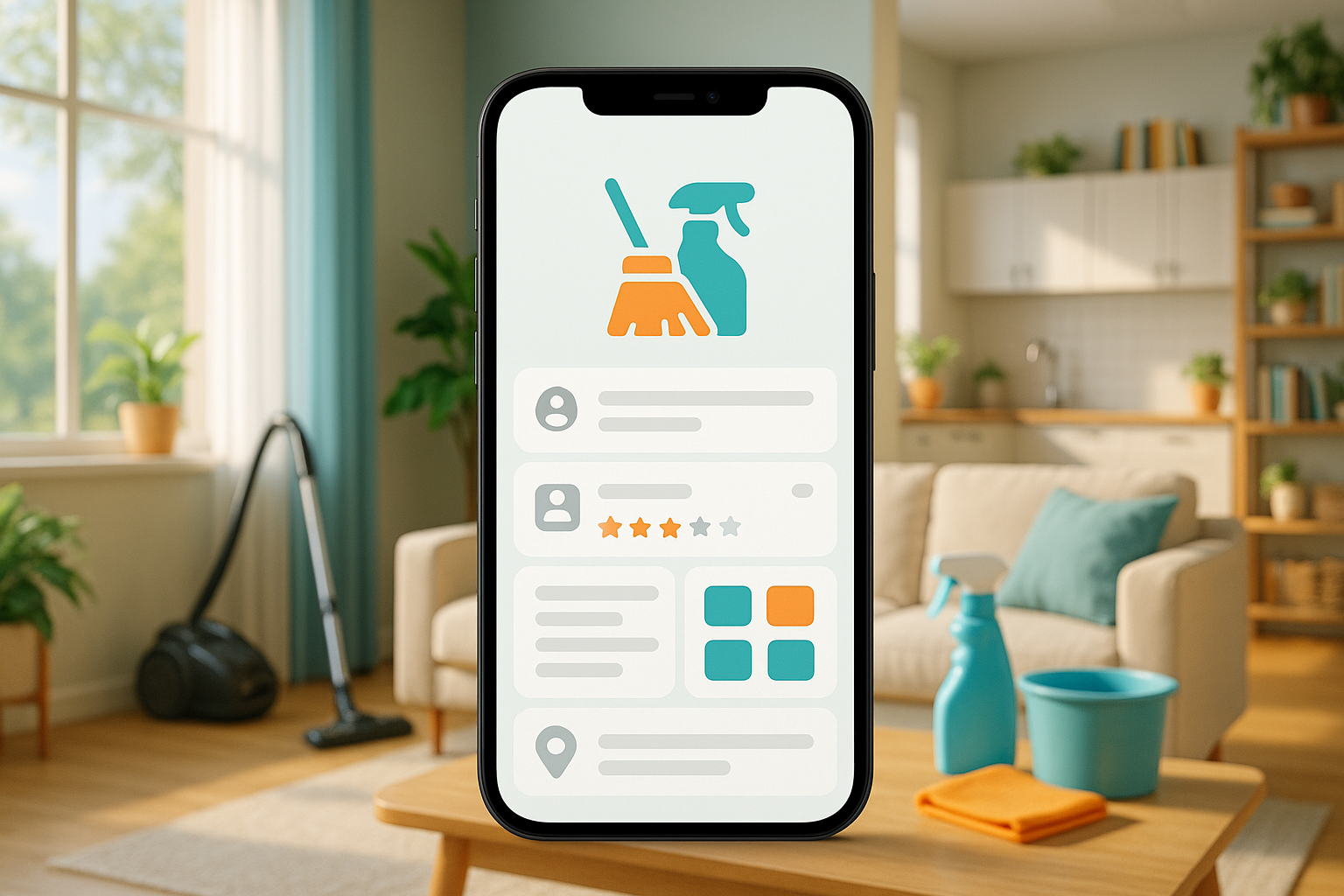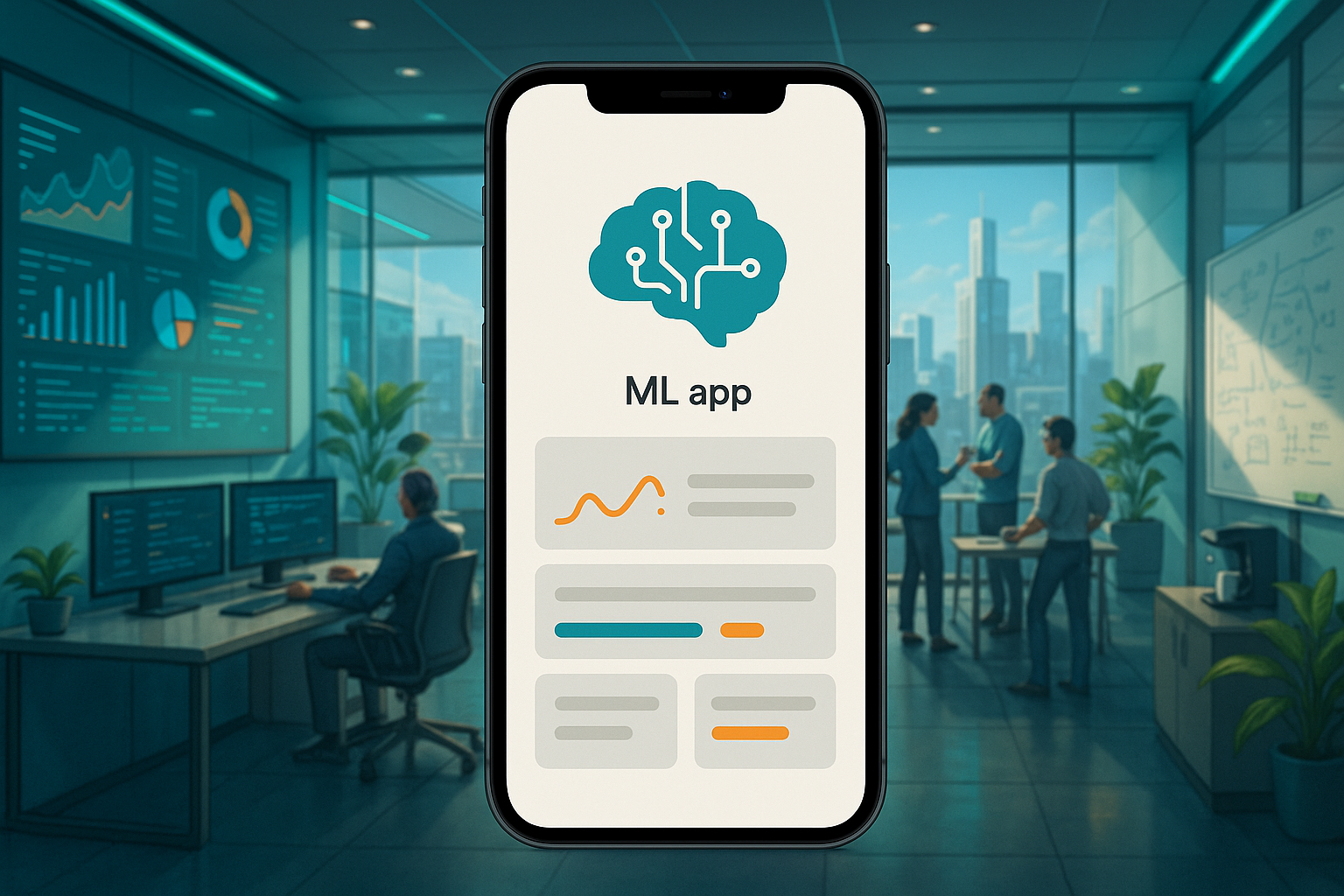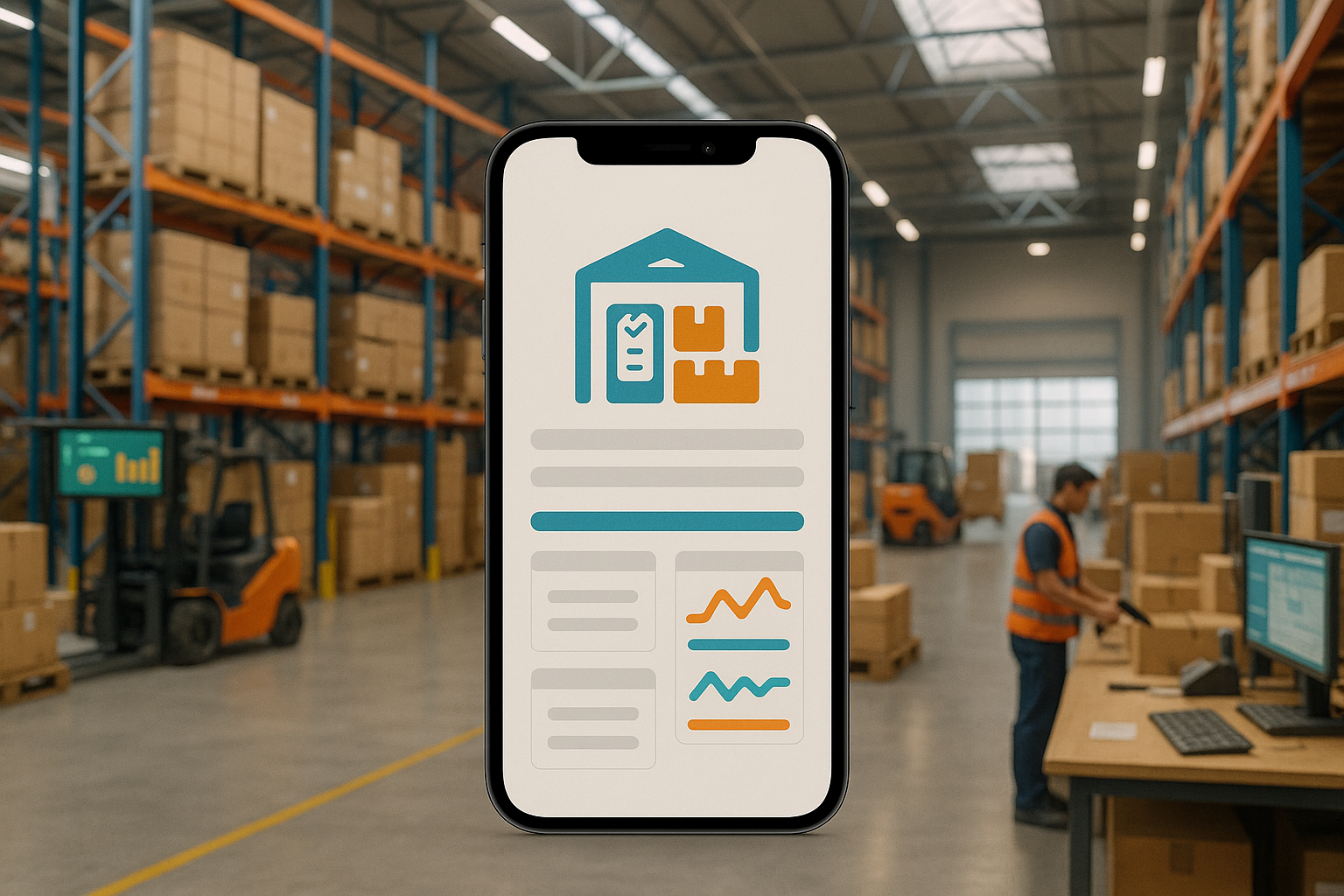Introduction: Navigating the Complex World of Mobile App Development
In today’s digital marketplace, a mobile app is no longer a luxury but a necessity for business growth and customer engagement. However, the path to launching a successful app is fraught with critical decisions. Business leaders and entrepreneurs are faced with a fundamental choice between three main development approaches: native, hybrid, and Progressive Web App (PWA). This decision is far from trivial; it is a crucial pivot point that can profoundly impact an app’s performance, user experience, development cost, and ultimately, its commercial success. The challenge lies in selecting the approach that best aligns with your business goals, budget, and target audience.
Many businesses, particularly startups and SMBs, are drawn to the promise of using web technologies like HTML, CSS, and JavaScript to build mobile applications. This approach, often referred to as “HTML app development,” seems to offer a faster, more cost-effective route to reaching users on both iOS and Android. Yet, developing a high-quality HTML-based app in-house is deceptively difficult. It presents a unique set of challenges related to performance, user interface consistency, and access to native device features.
This article serves as a comprehensive guide to understanding HTML app development. We will demystify what an “HTML app” truly is by exploring its different forms. We will delve into the significant reasons why in-house development can be a minefield of technical hurdles and potential setbacks. Furthermore, we will provide a clear estimate of development costs and introduce you to the qualities of a top-tier development partner.
As a top US AI-powered app development firm with over two decades of experience, we at MetaCTO have successfully launched over 120 projects, helping our clients navigate these complex decisions. We specialize in transforming ideas into market-ready applications, expertly integrating HTML and other web technologies where they make the most sense. We are here to help you build, grow, and monetize your mobile app, ensuring you make the right technical choices from day one.
What is an HTML App?
The term “HTML app” can be ambiguous, as it doesn’t refer to a single, officially defined category of application. Instead, it’s a broad label used to describe mobile applications that are built primarily using web technologies: HTML for structure, CSS for styling, and JavaScript for interactivity. When people discuss building an HTML app, they are almost always referring to one of two modern development approaches: Hybrid Apps or Progressive Web Apps (PWAs). Both leverage a single codebase to target multiple platforms, standing in contrast to the traditional native app approach.
To fully grasp what an HTML app is, it’s essential to understand these underlying technologies and how they compare.
Hybrid Apps
A hybrid app is essentially a web application built with HTML, CSS, and JavaScript that is wrapped inside a native container. This container is a downloadable application from an app store (like the Apple App Store or Google Play Store) that acts as a mini-web browser, specifically a “web view,” which renders the web code.
This approach allows developers to write their code once and deploy it across multiple platforms, such as iOS and Android. Instead of building two separate versions of an app from scratch using different programming languages, developers can create a single codebase. This significantly reduces the time and resources needed for development, making it a faster and more cost-effective solution than native development. Frameworks like Cordova, Ionic, and React Native (though it often compiles to native components) facilitate this process. The core advantage is efficiency: build once, run everywhere.
Progressive Web Apps (PWAs)
A Progressive Web App (PWA) is a more recent evolution in mobile development. At its core, a PWA is a website built with modern web technologies that is designed to provide an experience similar to a native app. Users can access a PWA through a standard web browser on any device. However, PWAs are designed to be “progressive,” meaning they can offer advanced, app-like features.
These features include the ability to be “installed” on a device’s home screen, function offline, and send push notifications. Like hybrid apps, PWAs are built with HTML, CSS, and JavaScript and use a single codebase for all platforms. They are generally more lightweight and easier to maintain than both native and hybrid apps. The key differentiator is that they live on the web and don’t require an app store for distribution, though some app stores are beginning to list PWAs.
The Contrast: Native Apps
To put HTML apps into context, it’s helpful to compare them to native apps. Native app development is considered the gold standard for mobile applications. This approach involves building an app specifically for a single platform using its designated programming language and development tools—Swift or Objective-C for iOS, and Kotlin or Java for Android.
Because a native app is built and optimized for a specific device’s hardware and software, it results in the fastest performance, the most seamless and responsive user experience, and full, unrestricted access to all of the device’s features and capabilities, such as the camera, GPS, and contact list. This high level of optimization makes native development ideal for 3D games, apps with many animations, or any application where performance is paramount. However, this excellence comes at a cost. Native development is more expensive and time-consuming, as it requires building and maintaining a separate codebase for each platform you wish to support.
Reasons It Is Difficult to Develop an HTML App In-House
The promise of using a single codebase to build an app for multiple platforms makes HTML app development—specifically hybrid development—an attractive option. It suggests a faster timeline and a lower budget. However, turning this promise into a high-quality, successful product is fraught with technical challenges that are often underestimated by in-house teams without specialized experience. These hurdles can lead to a compromised product that fails to meet user expectations.
Performance and User Experience Challenges
The most significant challenge with hybrid apps is grappling with performance issues compared to their native counterparts.
A Hybrid app runs in a web view.
This web view acts as an intermediary between the app’s code and the device’s operating system, creating a layer of abstraction that can introduce latency. Resource-intensive tasks, complex animations, or graphics-heavy applications may experience slower response times and a general feeling of sluggishness. This is particularly noticeable on older devices or with complex web content. The user experience may not feel as smooth and seamless as that of a native app, which communicates directly with the device’s hardware.
Limitations in Accessing Native Device Features
While hybrid apps can access many device features, this access is not always guaranteed or complete. Wrapped web apps and PWAs often lack full access to native device features like advanced camera controls, GPS, Bluetooth, and other hardware-related capabilities. Hybrid frameworks rely on plugins or bridges to communicate with native APIs, but these can have limitations:
- They may not exist for the specific feature you need.
- They might not be updated promptly when a new OS version is released.
- They can introduce their own bugs or performance overhead.
This can severely compromise the functionality of an application that is heavily reliant on specific native features. For example, an app requiring precise, low-level control of the device’s camera might find the hybrid approach insufficient.
Achieving a Consistent and High-Quality User Interface (UI)
Creating a user interface that looks and feels at home on both iOS and Android is a major challenge for hybrid apps.
Each platform boasts design guidelines and standards, making creating a seamless and uniform UI difficult for hybrid apps.
Android users are accustomed to Material Design, with its specific button styles, navigation patterns, and visual feedback. iOS users expect the conventions of Apple’s Human Interface Guidelines. A generic, one-size-fits-all UI built with HTML will feel alien on one or both platforms. The look and feel of a web view can often clash with the native design of the app, creating a disjointed user experience. Striking the right balance between a cohesive brand identity and platform-specific design conventions requires deep expertise and careful execution.
Security Concerns
Security is another area where hybrid apps demand careful attention. They are often perceived as more vulnerable than native apps. Because they are built on web technologies, they can be susceptible to web-based vulnerabilities if not properly secured. For any business handling sensitive information—such as user credentials, personal data, or payment details—it is imperative to address these potential security vulnerabilities to ensure the confidentiality and integrity of user data.
Why an Expert Agency Like MetaCTO is the Solution
Navigating these challenges requires a level of experience and specialized skill that most in-house teams do not possess. This is where partnering with an expert agency like us makes a significant difference. With 20 years of experience in the field, we at MetaCTO have honed our ability to overcome the inherent difficulties of HTML-based app development.
We know how to optimize for performance, ensuring your app feels snappy and responsive. We have the expertise to bridge the gap to native functionalities, using robust plugins or even writing custom native modules when necessary. Our design and development teams work in tandem to create a polished UI/UX that feels both unique to your brand and perfectly at home on any device. We build security into the foundation of every app we develop. By leveraging our Custom Mobile App Development services, you transform these challenges from roadblocks into manageable tasks, ensuring your app is not just functional but successful.
Different Types of HTML Apps
As we’ve established, “HTML app” is an umbrella term. To make an informed decision, you need to understand the nuances, advantages, and ideal use cases for the two primary types: Hybrid Apps and Progressive Web Apps (PWAs). Let’s explore each in greater detail and compare them to the native alternative.
Hybrid Apps
Hybrid apps combine the best of both worlds: the cross-platform compatibility of the web and the app store distribution of native apps.
- How they work: Built with HTML, CSS, and JavaScript, they are wrapped in a native shell and run inside a web view.
- Advantages:
- Cost-Effective: A single codebase for iOS and Android significantly reduces development costs. You don’t need to hire separate teams of developers for each platform.
- Faster Development: Reusing code across platforms shortens the development cycle, allowing for a quicker time-to-market.
- Multi-Platform Reach: The same codebase can be used for both iOS and Android, and potentially other platforms, maximizing your audience reach from a single effort.
- Disadvantages:
- Slower Performance: As discussed, the web view can sometimes result in slower performance and a less responsive feel than a native app.
- Poorer User Experience: The UI may not feel as smooth or seamlessly integrated with the host operating system.
- Limited Feature Access: May not have full or optimized access to all of a device’s native features and capabilities.
- Best Use Cases:
- Simple, Content-Based Projects: Ideal for apps that primarily display content and do not rely on heavy animations or complex features.
- Minimum Viable Products (MVPs): Excellent for testing a project idea in the market quickly and on a budget before committing to a full-scale native build. You can validate your concept with real users using our Rapid MVP Development service.
- Cross-Platform Release is a Priority: When getting your app onto both iOS and Android quickly is more important than achieving peak native performance.
Progressive Web Apps (PWAs)
PWAs represent the modernization of the website, giving it app-like capabilities and blurring the line between web and mobile.
- How they work: They are websites built with specific technologies (like Service Workers for offline support) that allow them to function like an app. They are accessed via a URL and can be “installed” on a user’s home screen.
- Advantages:
- Fast & Cost-Effective: Like hybrid apps, PWAs use a single codebase, making development super fast and affordable.
- Lightweight & Easy to Maintain: They are generally smaller in size than native or hybrid apps and easier to update, as changes are deployed directly to the web server.
- Offline Functionality: A key benefit is their ability to work offline or on low-quality networks, allowing users to access certain features even without an internet connection.
- No App Store Needed: They are discoverable through search engines and do not require a cumbersome app store submission and approval process.
- Disadvantages:
- Partial Hardware Access: PWAs have some limitations and may have only partial access to a device’s features compared to native and even hybrid apps.
- Variable User Experience: The UX can vary depending on the browser and platform used to access the PWA.
- User Perception: Some users may simply prefer the feel and security of a “real” native app downloaded from an official app store.
- Best Use Cases:
- Robust E-commerce Experiences: PWAs are fantastic for online stores, providing a fast, reliable shopping experience that can be easily accessed.
- Maximizing Traffic: Since they are accessible on all devices via a web browser, they are great for businesses that want to maximize their reach and traffic.
Quick Comparison Table
| Feature | Native App | Hybrid App | Progressive Web App (PWA) |
|---|---|---|---|
| Development | Platform-specific (Swift/Kotlin) | Web tech (HTML, CSS, JS) in a native wrapper | Web tech (HTML, CSS, JS) |
| Codebase | Separate for each platform | Single codebase | Single codebase |
| Performance | Highest | Moderate | Good, can vary by browser |
| User Experience | Most seamless and responsive | Can be less smooth | Good, but browser-dependent |
| Device Access | Full access | Good access via plugins | Partial access |
| Cost | High | Moderate | Low to Moderate |
| Time-to-Market | Long | Fast | Fastest |
| Distribution | App stores | App stores | Web browser (installable) |
Choosing the right type is crucial. Native development is top-notch for high-performing, feature-rich apps but costs more time and money. Hybrid development is excellent for getting an app out fast and saving cash, though it might not be as snappy. PWAs are super fast and cost-effective and even work offline, but they might not have access to all the fancy features of a native or hybrid app.
Cost Estimate for Developing an HTML App
One of the primary drivers for choosing an HTML-based approach, particularly a hybrid app, is cost-effectiveness. Because a single codebase can be used to run the app on multiple platforms, businesses can avoid the significant expense of building and maintaining two separate native applications. Hybrid apps are generally more affordable, making them a budget-friendly solution for startups, mid-sized businesses, and even well-established enterprises looking to optimize their development spend.
However, the final cost of developing a hybrid app is not a single number; it varies based on a wide range of factors. Based on industry data, the average cost for hybrid app development falls within a specific range, but this can change significantly depending on the project’s requirements.
Average Cost Breakdown
Suffescom Solutions revealed a typical cost range for hybrid mobile app development. Here is a breakdown of the estimated costs for an average project:
- Basic Hybrid App: $5,000 - $10,000
- Medium Complexity Hybrid App: $10,000 - $15,000
- Advanced Complexity Hybrid App: $15,000 - $25,000
The total estimated cost for a standard hybrid app development project is $10,000 to $25,000. This can be further broken down by development phase:
| Development Phase | Estimated Cost Range |
|---|---|
| Consultation | Free |
| UI/UX Design | $2,000 - $5,000 |
| Frontend Development | $3,000 - $7,500 |
| Back-end Development | $4,000 - $10,000 |
| Testing & Quality Assurance (QA) | $1,000 - $2,500 |
| Total Estimated Cost | $10,000 - $25,000 |
Key Factors That Influence Cost
The overall cost can shift based on several critical variables. Understanding these factors will help you budget more accurately for your project.
-
App Complexity: This is the most significant cost driver. A simple app with limited features and a minimalist design will be less expensive. Conversely, a cross-platform application that incorporates high-end, complex features and capabilities—such as real-time data synchronization, advanced user management, or custom animations—will be more expensive.
-
Features and Functionality: The specific features you choose to incorporate directly impact the cost. Each feature adds development time and complexity. Incorporating new technologies, such as AI integration for personalized experiences, may also raise the development cost.
-
Third-Party Integrations: If your app needs to connect with other services, the cost will go up. Including complex third-party integrations, such as social media logins, payment gateways (like Stripe or PayPal), order processing systems, or location-based services (like Google Maps), adds another layer of development and testing.
-
UI/UX Design: The level of customization and polish in your app’s interface affects the price. A template-based design is cheaper, while a fully custom, highly polished UI/UX will require more design and frontend development hours, increasing the cost. If you are targeting both iOS and Android and require distinct app designs to adhere to each platform’s UI/UX guidelines, extra time and money may be needed.
-
Development Team: The location and expertise of your development team play a major role. Development costs vary significantly by geographic region. Furthermore, a highly experienced senior team will command a higher rate than a junior team, but they will likely deliver a higher-quality product more efficiently.
-
Maintenance and Support: The costs don’t end at launch. Ongoing expenses include maintenance to fix bugs, updates to ensure compatibility with new OS versions, server hosting, app store fees, and charges for any third-party services your app uses. These post-launch services contribute to the total cost of ownership.
Hybrid app development solutions are designed to be cost-effective and can generate a high return on investment. By understanding these cost factors, you can make strategic decisions to build an app that meets your goals while staying within your budget.
How to Choose a Top HTML App Development Company
Selecting the right development partner is as critical as choosing the right technology. The success of your HTML app hinges on the expertise, process, and reliability of the team you hire. While there are many agencies to choose from, a top-tier company stands out through its experience, comprehensive services, and a proven track record of delivering results. When evaluating potential partners, you should look for a firm that doesn’t just write code, but acts as a strategic partner invested in your success.
1. MetaCTO
At MetaCTO, we position ourselves as the premier choice for businesses looking to build, grow, and monetize mobile applications. We are not just a group of developers; we are a US-based, AI-powered mobile app design, strategy, and development agency with a foundation built on over 20 years of experience. Our track record speaks for itself: over 120 successful projects launched, more than $40 million in fundraising support for our clients, and a 5-star rating on Clutch.
What Sets Us Apart?
- Founded by Experts: We were founded by seasoned technical leaders who understand that technology strategy must be perfectly aligned with business goals. We offer flexible solutions that can be executed by your in-house team or by leveraging our broader skill set.
- A Holistic, Step-by-Step Process: We are with you every step of the way, from concept to launch and beyond. Our proven process ensures you go to market faster, slash costs, and get expert guidance at every turn:
- Validate: We turn your idea into an MVP quickly, helping you test the waters and collect real feedback on a tight budget and timeline.
- Build: We handle the entire process—design, build, and launch—so your app is market-ready and delivers a smooth experience.
- Grow: We use A/B testing and analytics to optimize user onboarding, engagement, and retention, helping you build a loyal customer base. Check out our App Store Optimization & Growth services.
- Monetize: We help you figure out the best way to turn your app into a money-maker, whether through subscriptions, ads, or in-app purchases.
- Evolve: As your business scales, we make sure your app evolves with it, upgrading with the latest tech to stay competitive.
- Deep Technical and AI Expertise: We don’t just build standard apps. We are experts in integrating cutting-edge technology. Our AI Development services transform businesses with custom chatbots, advanced machine learning models, and other tailored AI solutions that enhance efficiency and drive innovation.
- Proven Success: We have helped brands of all sizes succeed. From turning a digital content library into a video streaming app generating over $500k in annual subscriptions for Mamazen, to implementing computer vision AI for the G-Sight training app, our case studies demonstrate our ability to deliver tangible results.
Choosing MetaCTO means choosing a partner dedicated to building your app the right way, from day one.
Conclusion: Partner with an Expert to Ensure Success
Integrating web technologies like HTML into a mobile app is a powerful strategy for achieving cross-platform reach efficiently and affordably. However, as we have explored, the path is laden with challenges. The difficulty of overcoming performance bottlenecks, achieving a truly native look and feel, ensuring robust security, and gaining reliable access to device hardware can easily overwhelm an in-house team, leading to a product that frustrates users and fails to meet business objectives.
Hiring a specialized development agency like MetaCTO is the most effective way to mitigate these risks and turn your vision into a high-quality, market-ready application. Our deep expertise in both web and native technologies allows us to expertly navigate the complexities of hybrid and PWA development. We know how to optimize performance, craft a seamless user experience that respects platform conventions, and implement the necessary bridges to unlock the full potential of a device’s features.
Throughout this guide, we have provided a clear overview of the mobile development landscape. We defined what an HTML app is, breaking it down into its two main forms: hybrid apps and PWAs. We detailed the significant challenges that make in-house development so difficult. We provided transparent cost estimates and the key factors that influence them. And we highlighted what makes a top development company stand out.
Don’t let technical hurdles stand between your idea and a successful product. Build smart, launch strong, and scale fast with a partner who has been through it all.
Ready to integrate HTML into your product and build a successful app? Talk with an HTML expert at MetaCTO today and let’s build your app the right way, from day one.






